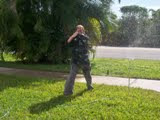Lucky for me I am finally back to an important subject: kids in karate.

I looked back on the old posts before I began writing to help me decide where to go today. I hope, in my absence of new posts, you reread some of the old posts. The reminders are helpful:
The children are more important than the technology.
Modern kids and repetition don’t mix well. It is important to mix it up, often.
Enjoy teaching, and in that enjoyment everyone grows.
I’ve decided to pick up here with some reader feedback. I’ve received a number of great ideas from you and I thank you for that.
I got the most feedback to the kata post. Here are the highlights:
Sensei Mel likes to ask history questions while the kids do kata to test the student’s focus.
Sensei Chrissy likes to have special names for people. That helps get their attention for corrections during kata.
I want to thank the people who wrote in with differing viewpoints. That is helpful. One important point that a few of you brought to my attention is that using the word “no” in kata (refer to the Aug. post) is helpful when the student is headstrong / not listening / and generally full of themselves.
Sensei Mashell from Palm Bay wrote in a few ways that she changes up kata. One suggestion was Crazy Kata day where she does the same kata” nap speed (very slowly) , super sonic speed (self-explanatory), and tournament speed”.

Sensei Mashell also offered the addition of bunkai while explaining / working kata. I hope we all use that one. It is very traditional and necessary.
More than one of you wrote in to do kata blindfolded and facing different directions.
The original post on kata turned out to be very long. Therefore, I’m adding a few kata thoughts that I employ regularly that didn’t make the original post: 
Of course we need to emphasize both group kata and individual kata. Have you ever considered why it is important to do both? Group kata is important because the practitioner needs to be willing to compartmentalize his / her ego for the group to perform well. I’d like to say this is harder for kids than adults. However, my experience is that it is difficult for all of us and that when a person is good at group kata, individual kata is more challenging and visa versa. To me this emphasizes the importance of both.
Don’t for get to let kids make up their own kata. That drill is great at holiday time. Everyone puts on a show of their kata at the end of the class. Kids are inventive and the creativity can’t be beat.
get to let kids make up their own kata. That drill is great at holiday time. Everyone puts on a show of their kata at the end of the class. Kids are inventive and the creativity can’t be beat.
One more note:
Sensei Chrissy, after reading the Five Drills post, sent in another use of the noodle. She cuts them in ½ and has the kids use them against each other. Great idea. I’ve used this one. However, I like to put on headgear because the noodles scrape the skin on the kid’s faces sometimes.
So…. That is reader suggestions so far. Please continue to read and write me at kickswithkids@aol.com.
I will continue to post (much more regularly in 2010 I hope) and we’ll keep making stronger kids!
Oos,
